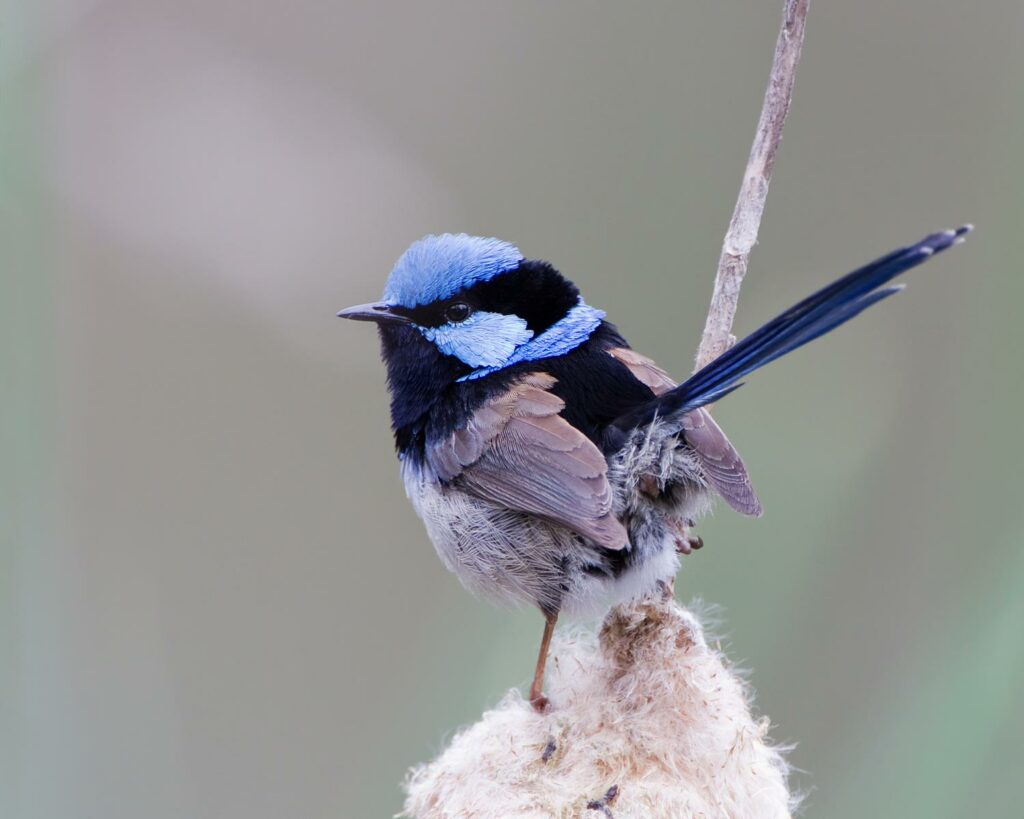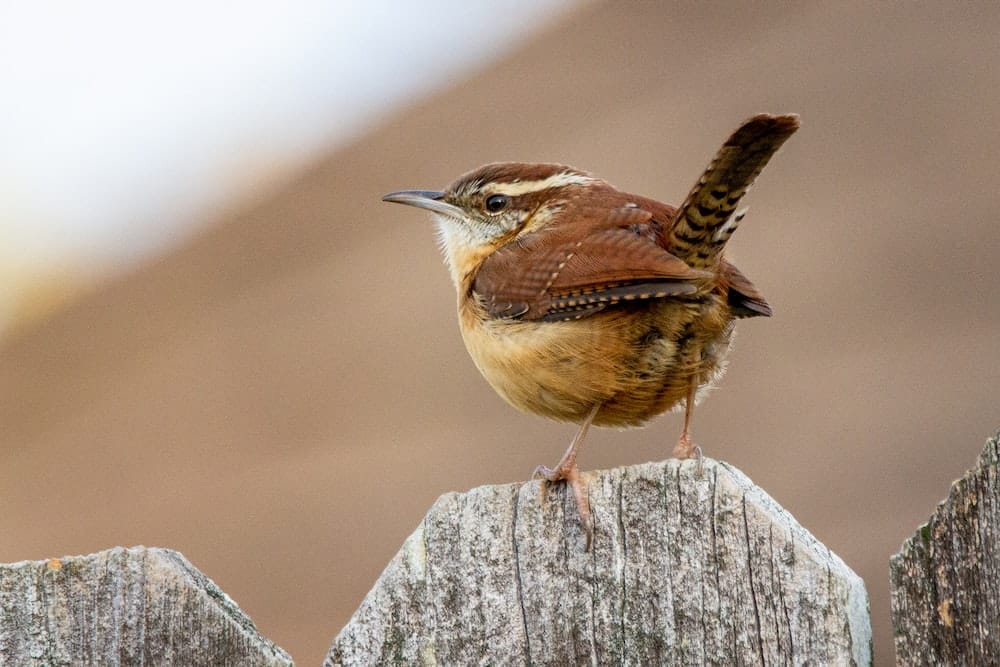The wren, belonging to the family Troglodytidae, is a captivating and diverse group of small passerine birds. With over 80 species distributed across the Americas, Eurasia, and Africa, wrens are known for their energetic behaviour, enchanting songs, and remarkable nesting habits. In this article, we delve into the captivating world of wrens, exploring their taxonomy, physical characteristics, habitat, behaviour, and interactions with humans.
Taxonomy and Classification
Wrens are classified within the order Passeriformes, which includes perching birds. They belong to the family Troglodytidae, which comprises various genera such as Troglodytes, Campylorhynchus, and Thryothorus. Each genus encompasses distinct species with unique features and adaptations. This diversity showcases the evolutionary success and adaptability of wrens across different environments.
Physical Characteristics
Wrens are characterised by their small size, measuring between 10 to 20 centimetres in length. They have round bodies, short wings, and long, slender bills. The plumage of wrens varies significantly among species, showcasing an array of colours ranging from shades of brown and grey to vibrant combinations of red, orange, and yellow. Many wrens also exhibit intricate patterns, such as bars, spots, or streaks, adding to their visual appeal.

Habitat and Distribution
Wrens occupy a wide range of habitats, including forests, woodlands, grasslands, and shrublands. They are found in both tropical and temperate regions worldwide. Different species of wrens have specific preferences for their habitats. For instance, some thrive in dense, understory vegetation, while others prefer open fields or coastal areas. Their adaptability allows them to colonise various ecosystems across different continents.
Wrens in the UK
The United Kingdom is home to the Eurasian Wren (Troglodytes troglodytes), a small but widely distributed wren species. In the UK, the Eurasian Wren is commonly referred to as simply the “wren.” It is a resident bird, meaning it can be found in the UK throughout the year. The Eurasian Wren is known for its vibrant vocalisations, despite its small size, and its energetic and agile nature.
Behaviour and Adaptations
Wrens are highly active and agile birds, constantly in motion. They are known for their rapid hopping and flitting movements, exploring their surroundings with curiosity. Their long bills enable them to probe crevices and extract insects and other invertebrates as they forage for food. Wrens exhibit remarkable agility and dexterity when constructing nests, often weaving intricate structures using twigs, grass, feathers, and spiderwebs. These nests are carefully hidden within thick foliage, tree cavities, or even man-made structures.

Diet and Feeding Habits
The diet of wrens primarily consists of insects and spiders. They actively search for prey, meticulously gleaning insects from leaves, branches, and the ground. Wrens are skilled insect hunters, capable of capturing prey in mid-air with their agile flight. By consuming vast quantities of insects, they play an essential role in regulating insect populations, making them valuable contributors to ecosystem balance and pest control.
Reproduction and Life Cycle
Wrens are monogamous birds, forming pairs during the breeding season. The construction of their nests is a joint effort, with both male and female participating in building and maintenance. Wren nests are marvels of architecture, reflecting the intricacy and attention to detail in their design. The female lays a clutch of eggs, usually ranging from 3 to 10, depending on the species. Both parents take turns incubating the eggs and caring for the hatchlings. The chicks are fed a diet rich in insects until they fledge and become independent.
Vocalisations and Communication
Wrens are renowned for their melodious and complex songs. Male wrens often sing to establish territories and attract mates. Their songs are characterised by a series of musical notes, trills, and whistles, showcasing their vocal prowess. In addition to songs, wrens utilise a range of calls and vocalisations to communicate with their flock members, signalling potential threats or coordinating foraging activities. The diversity and intricacy of their vocal repertoire are truly remarkable.
Predators and Threats
Wrens face various predators in their natural habitats. Snakes, birds of prey, and mammals pose threats to these small birds. However, their small size and agile nature allow them to evade many predators successfully. Despite their adaptive abilities, wrens are not immune to human-induced threats. Habitat loss, deforestation, and climate change are significant challenges impacting wren populations worldwide. Conservation efforts aimed at preserving their habitats and raising awareness are crucial to ensure their survival.

Interaction with Humans
Wrens have captivated human interest with their enchanting songs and lively behaviour. Many birdwatchers and nature enthusiasts appreciate the presence of wrens in their local ecosystems. Their charming vocalisations and vibrant plumage make them popular subjects for photography and artistic endeavours. Additionally, wrens provide valuable ecological services by controlling insect populations, making them beneficial to agriculture and gardens.
Interesting Facts about Wrens
- Wrens have one of the loudest songs relative to their body size, allowing them to be heard over long distances.
- Some wren species are known to sing in duets or choruses, creating beautiful harmonies.
- The Carolina Wren (Thryothorus ludovicianus) is the state bird of South Carolina in the United States.
- Wrens possess an exceptional ability to enter tiny crevices and extract insects, displaying their agility and resourcefulness.
- The Winter Wren (Troglodytes hiemalis) has one of the largest vocal repertoires among birds, with a wide range of complex songs.
Conclusion
In conclusion, wrens (Troglodytidae) are captivating birds with their energetic behaviour, melodious songs, and intricate nests. They inhabit diverse habitats worldwide, showcasing their adaptability. However, human-induced threats and habitat loss pose challenges to their survival. It is our collective responsibility to appreciate and protect these delightful creatures, ensuring their presence for future generations to enjoy.
Sam loves to learn about animals and their habitats. He has been a nature lover from a very young age, and has been writing papers and articles about wildlife for as long as he can remember.
